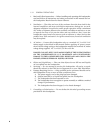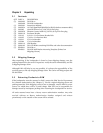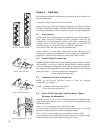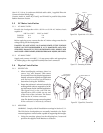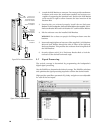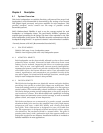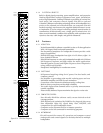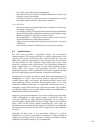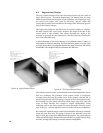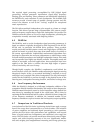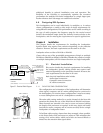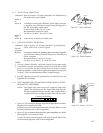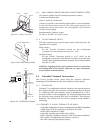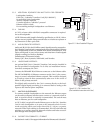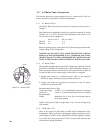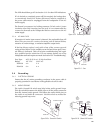
4.4 Engineering Design
The core acoustical design of the DSA Series dates back to the late 1930s in
Harry Olson’s book, “Acoustical Engineering”. He showed that, by using
different signal delays on the input to each transducer in a simple line array,
the array’s main output lobe could be effectively “steered”. While this
concept has certainly been used before, the design of the DSA Series goes far
beyond this simple concept.
The engineering design for the DSA Series is certainly capable of “steering”
the main output lobe, as per Olson. However, the shape of the lobe in the
vertical plane is also variable. This allows changing the depth of the
coverage to precisely fit the listening area thereby reducing troublesome
near-to-far SPL differences.
A major advantage of DSA is the character of its radiation pattern. Contrary to
what might be intuitively assumed, the DSA’s radiation pattern is not the same
as simply down-tilting a loudspeaker that has the same horizontal and vertical
beamwidths. The example EASE plots illustrate this difference.
The radiation pattern of the conventionally, down-tilted loudspeaker has at
least two problems. The geometry of the pattern results in inadequate
coverage across the front area of the room. It also focuses a distinct line of
energy along the side wall. This energy is nearly at the same loudness as the
floor seating area. The sound reflections off the upper part of the wall will
arrive at many listeners late enough to impair intelligibility. These
reflections add to the direct sound and cause the higher intensity sound
seen at the rear , even though these areas are further from the loudspeaker.
By contrast, the radiation pattern of the DSA loudspeaker is far more consistent
across the entire floor area. The energy it directs to the sidewalls is not only
lower in level, but creates a very different reflection pattern. The sound reflected
off the wall will be largely directed down into the floor or nearby listeners along
the sides, arriving early enough to actually enhance intelligibility.
14
Ver: 30° Hor: 120°
Lspk: S1
Project: DSAMultipurpose-Tilt
Map: Direct SPL
Freq: 5000 Hz
[Third Octave Average]
Shadow Cast: No
Resolution = 1.0 m
Ver: 30° Hor: 120°
Lspk: S1
Project: DSAMultipurpose-Steer
Map: Direct SPL
Freq: 5000 Hz
[Third Octave Average]
Shadow Cast: No
Resolution = 1.0 m
Figure 4.4a Angled Radiation Pattern
Figure 4.4b DSA Steered Radiation Pattern



